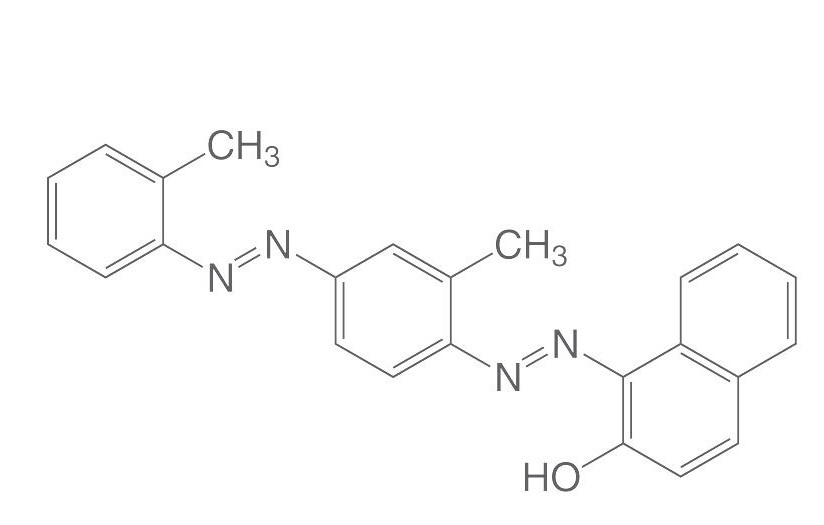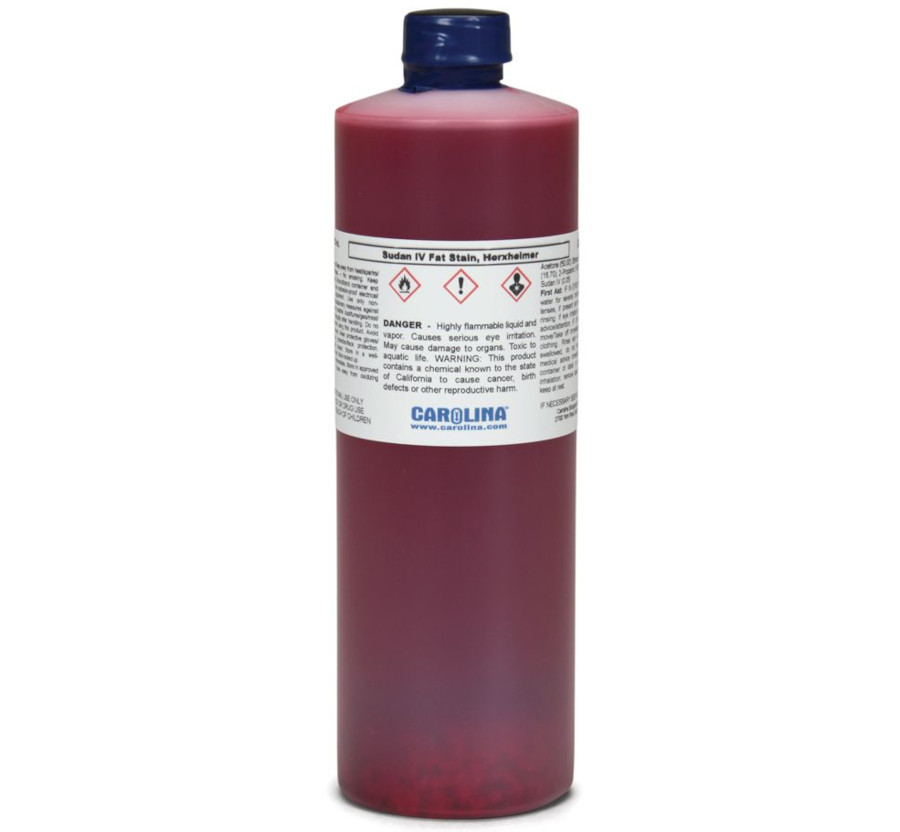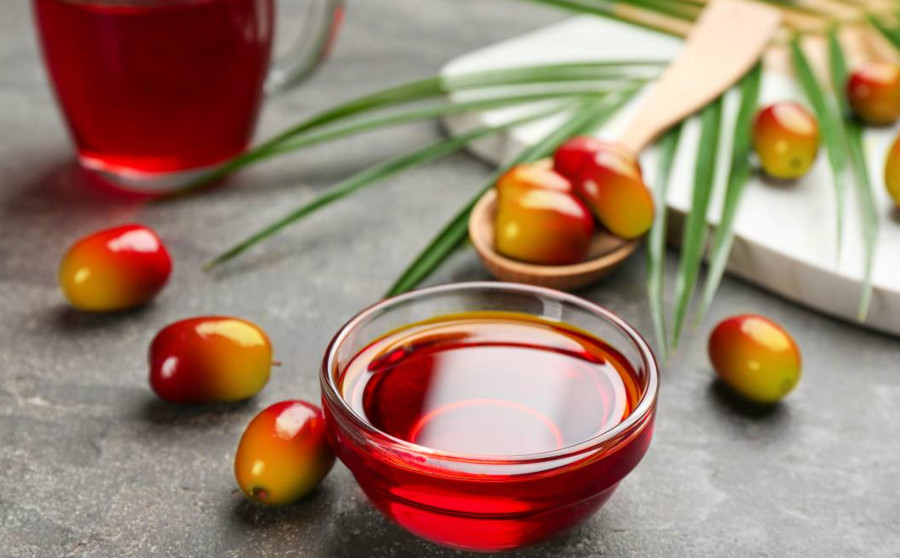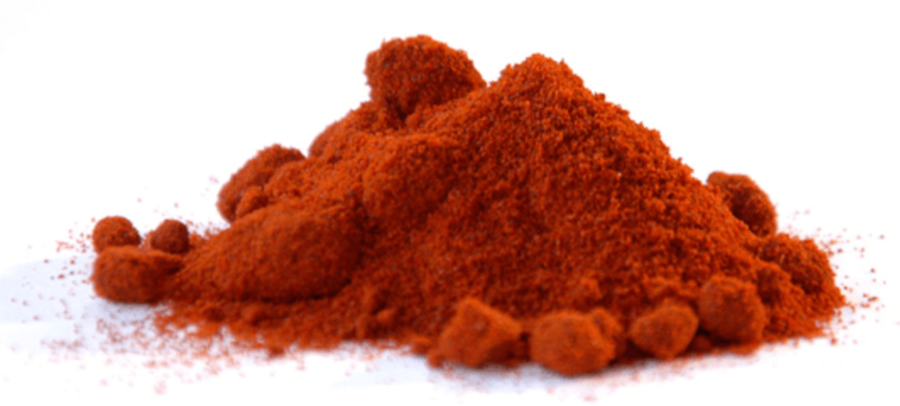Palm oil serves as a widely favoured cooking oil in Ghana and other Western African countries. Nonetheless, it has recently come to my attention that certain palm oil producers incorporate Sudan IV dye into their products as a colour enhancer, despite the fact that it is strictly prohibited as a food colourant by the International Agency for Research on Cancer (IARC) due to its known carcinogenic and mutagenic properties. This issue poses a grave concern, as consumers are generally unaware of the addition of Sudan IV dye to palm oil and the severe health risks associated with its consumption. Therefore, let’s delve deeper into the world of Sudan IV dye to better comprehend its implications.
What is Sudan IV dye?
Sudan IV dye, also known simply as Sudan IV, is a synthetic organic compound that is classified as a diazo dye. It is commonly used as a stain or dye in various laboratory applications, particularly in histology and microbiology. Sudan IV is known for its ability to selectively stain lipids, particularly triglycerides and fats.
In laboratory settings, Sudan IV is often used to stain lipids in tissue samples or in microbiological studies to identify lipid-rich structures, such as lipid droplets in cells. When Sudan IV is applied to a sample containing lipids, it binds to the lipids and imparts a red-orange colour to them, making it easier to visualise and study lipid-containing structures under a microscope.
Sudan IV is also sometimes used in certain chemical tests to detect the presence of lipids or fats in various substances. For example, it can be used in the Sudan IV test to determine the presence of lipids in food products or in other organic materials.
It’s worth noting that Sudan IV is considered a hazardous substance and should be handled with care in a laboratory setting, following appropriate safety protocols and disposal procedures.
What makes up Sudan IV dye?
Sudan IV dye is a synthetic organic compound with a specific chemical structure. Its chemical name is 1-(4-phenylazo-phenylazo)-2-naphthol, and its chemical formula is C24H20N4O.
The key components that make up Sudan IV dye are:
- Azo Dye Group: Sudan IV contains two azo (-N=N-) functional groups, which are responsible for its characteristic red-orange colour. Azo dyes are a class of synthetic dyes that contain one or more azo groups in their molecular structure.
- Aromatic Rings: Sudan IV contains two aromatic rings, one naphthalene ring and one phenyl ring. These aromatic rings contribute to the overall structure and stability of the molecule.
- Hydroxyl Group: The molecule includes a hydroxyl group (-OH), which is attached to one of the aromatic rings. This hydroxyl group can participate in chemical reactions, such as binding to lipids when used as a stain.
- Phenyl Groups: Sudan IV contains two phenyl groups, which are aromatic hydrocarbon rings. These groups are responsible for some of the colouration and chemical properties of the dye.
The chemical structure of Sudan IV gives it the ability to selectively bind to lipids and fats, which is why it is commonly used as a stain for lipids in laboratory applications. It’s important to note that Sudan IV is a synthetic compound and should be handled with care due to its potential toxicity, as discussed previously.

Is Sudan Sudan IV dye used in food?
Sudan IV dye is not approved for use in foods and should not be added to any food products intended for human consumption. It is considered a hazardous substance and can pose health risks if ingested. Its use in food is prohibited in most countries due to its potential health hazards.
Sudan IV dye is primarily used in laboratory and industrial applications, as I mentioned earlier, for staining lipids in tissue samples, detecting lipids in certain chemical tests, and other non-food-related purposes. It is not an approved food additive, and its use in food is strictly regulated and generally prohibited due to concerns about its safety.
Dangers of Sudan IV dye
Sudan IV dye poses several dangers, particularly when it is not used properly or when it comes into contact with the human body. Some of the dangers associated with Sudan IV dye include:
- Toxicity: Sudan IV is considered toxic and can be harmful if ingested, inhaled, or absorbed through the skin. Ingesting or inhaling the dye can lead to a range of health issues, including gastrointestinal distress, respiratory problems, and skin irritation.
- Carcinogenicity: Sudan IV is classified as a Group 3 carcinogen by the International Agency for Research on Cancer (IARC). This means that there is limited evidence suggesting that it may be carcinogenic to humans. Prolonged exposure or ingestion may increase the risk of cancer.
- Skin and Eye Irritation: Direct contact with Sudan IV can cause skin irritation and redness. If it comes into contact with the eyes, it can lead to eye irritation, redness, and potential damage to the eyes.
- Allergic Reactions: Some individuals may be hypersensitive or allergic to Sudan IV, leading to allergic reactions when exposed to the dye. These reactions can range from skin rashes to more severe allergic responses.
- Environmental Concerns: Sudan IV is not environmentally friendly. Improper disposal can lead to contamination of soil and water, potentially harming ecosystems.
- Regulatory Restrictions: In many countries, Sudan IV is strictly regulated, and its use in certain applications, especially in food and cosmetics, is prohibited due to its potential health risks.
Given these dangers, it’s essential to handle Sudan IV dye with extreme care, following safety protocols, and using protective equipment when working with it in laboratory or industrial settings. It should never be used in food or personal care products intended for human use due to the risks associated with ingestion and skin contact.

Products that use Sudan IV
As noted prior, Sudan IV dye is not approved for use in food, cosmetics, or any products intended for human consumption or application in many countries due to its potential health risks, including carcinogenicity. Its use in such products is prohibited or highly regulated.
However, Sudan IV dye has found applications in non-consumable products and industrial or laboratory settings, such as:
- Laboratory Stains: Sudan IV is commonly used in laboratories for staining lipids and fats in various scientific experiments and tests, particularly in histology and microbiology.
- Textile Industry: It has been used in the textile industry to dye fabrics and fibres, although its use has become less common over time.
- Petroleum Industry: Sudan IV has been used in the petroleum industry as a tracer dye for detecting hydrocarbons in soil and water samples.
- Research and Development: In research and development, Sudan IV may be used as a reference compound or a tool in chemical studies.
- Education: Sudan IV may be used as an educational tool in chemistry and biology classrooms to demonstrate principles of staining and dye chemistry.
It’s important to note that its use in any application should be handled with care, following safety protocols and local regulations, as Sudan IV is considered a hazardous substance. Additionally, its use in food, cosmetics, or any products intended for human use is not permissible in many regions due to its potential health hazards.
Testing for Sudan IV
Testing for the presence of Sudan IV dye in products, especially in food and cosmetics, is essential to ensure consumer safety and compliance with regulations. Several methods can be used to detect Sudan IV dye in products, including:
- Thin-Layer Chromatography (TLC): TLC is a common method used to detect Sudan IV dye in food and other products. It involves applying a sample of the product onto a thin layer of a specialized adsorbent material (the TLC plate) and using a solvent to separate the different components, including the dye. The presence of Sudan IV can be confirmed by comparing the sample’s migration pattern to that of a known Sudan IV standard.
- High-Performance Liquid Chromatography (HPLC): HPLC is a more sophisticated chromatographic technique that can be used for quantitative analysis of Sudan IV dye in products. It involves separating and quantifying the dye based on its retention time and concentration.
- Spectrophotometry: Spectrophotometry measures the absorbance of light by a sample at specific wavelengths. Sudan IV dye has characteristic absorption peaks in the visible range. By measuring the absorbance of a sample at the appropriate wavelength, the presence and concentration of Sudan IV can be determined.
- Mass Spectrometry: Mass spectrometry can be used to confirm the identity of Sudan IV dye in a product. It analyses the mass and structure of the dye’s molecules, providing a definitive identification.
- Immunoassays: Immunoassays, such as enzyme-linked immunosorbent assays (ELISA), can be used to detect Sudan IV dye through antibody-antigen interactions. Specific antibodies are used to target Sudan IV, and the resulting reaction can indicate its presence.
- Gas Chromatography-Mass Spectrometry (GC-MS): GC-MS is a highly sensitive technique that can identify and quantify the presence of Sudan IV and other chemical compounds in a sample.
- Colour Tests: Some simple colour tests can be used as initial screening methods. For example, a reagent like sulfuric acid can be used to detect the red coloration characteristic of Sudan IV dye. However, these tests are not as specific as chromatographic or spectrophotometric methods.
When conducting tests for Sudan IV in products, it’s important to follow recognised testing procedures, use appropriate equipment and reagents, and ensure that the laboratory conducting the testing is accredited and follows quality assurance protocols. Additionally, consult local regulations and guidelines to ensure compliance with legal requirements for testing.

How can consumers know if the palm oil they are buying contain Sudan IV dye?
Detecting the presence of Sudan IV dye in palm oil as a consumer can be challenging because it is typically not listed as an ingredient on product labels, especially when it is added illegally. However, there are some steps consumers can take to minimise the risk:
- Buy from Reputable Brands: Purchase palm oil from well-known and reputable brands or suppliers. Established companies are more likely to adhere to food safety regulations and quality standards.
- Check for Certification: Look for certifications such as RSPO (Roundtable on Sustainable Palm Oil) or other industry-standard certifications. These certifications often include rigorous quality controls and can indicate a commitment to product safety.
- Inspect the Product: Examine the palm oil for any unusual colouration. Sudan IV dye imparts a reddish-orange colour to products, so if the oil appears unusually red or vibrant, it could be a cause for concern.
- Read Labels Carefully: While Sudan IV dye might not be listed on labels if added illegally, carefully read product labels for any suspicious or unfamiliar ingredients. If you notice any unfamiliar additives or colours, it’s best to avoid the product.
- Purchase from Local Markets: In some cases, buying palm oil from local markets where you can speak directly with producers or sellers may provide more transparency and assurance of the product’s quality.
- Stay Informed: Keep yourself informed about any recalls or safety alerts related to palm oil in your region. Government agencies and food safety authorities may issue warnings if contaminated or adulterated products are discovered.
- Report Suspicious Products: If you suspect that a palm oil product contains Sudan IV dye or other harmful additives, report it to your local food safety authority or regulatory agency. They can investigate and take appropriate action.
While these steps can help consumers make more informed choices, it’s important to note that detecting Sudan IV dye in palm oil may still be challenging due to illegal adulteration. Therefore, relying on reputable sources and supporting transparent supply chains is crucial in minimising the risk of exposure to such harmful substances.
In summary, Sudan IV dye poses significant risks not only to human health but also to the environment. While some may argue for its limited use in laboratory and industrial contexts, the potential hazards associated with this dye outweigh any perceived benefits, making its complete avoidance and discontinuation the prudent choice.
Qualitative analysis of Sudan IV in edible palm oil
Research paper: Qualitative analysis of Sudan IV in edible palm oil
This article is copyrighted by Ital is Vital, 2025. Want to re-post this article? Visit our guidelines.
DISCLAIMER: THIS WEBSITE DOES NOT PROVIDE MEDICAL ADVICE
The information, including but not limited to, text, graphics, images and other material contained on this website are for informational purposes only. The purpose of this website is to promote broad consumer understanding and knowledge of various health topics. It is not intended to be a substitute for professional medical advice, diagnosis or treatment. Always seek the advice of your physician or other qualified health care provider with any questions you may have regarding a medical condition or treatment and before undertaking a new health care regimen, and never disregard professional medical advice or delay in seeking it because of something you have read on this website.
